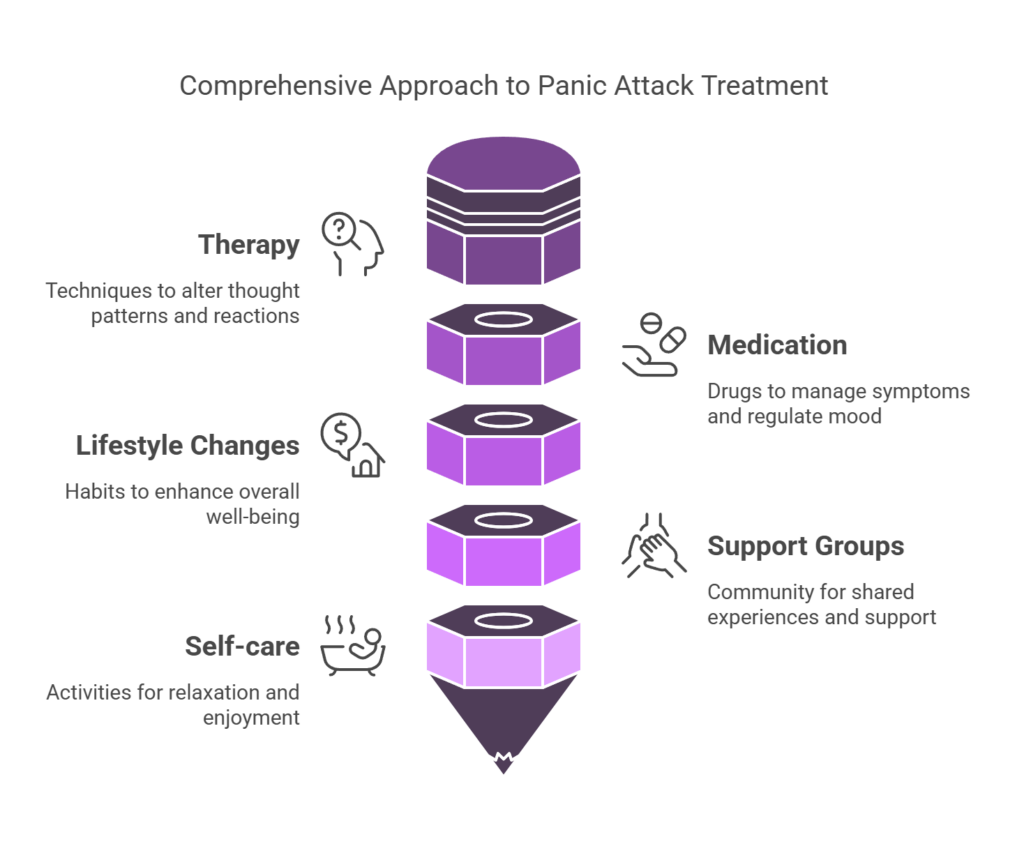Discovering the underlying causes of panic attacks can be like peeling back the layers of a mysterious puzzle. These sudden surges of overwhelming fear and anxiety can strike without warning, leaving individuals feeling helpless and desperate for answers.
In this blog, we will get on a journey to unmask the hidden triggers behind panic attacks, shedding light on their complex origins and unraveling the symptoms that often accompany them.
While panic attacks can feel debilitating, understanding their root causes is essential in developing effective strategies for managing and preventing them. From biological factors, such as brain chemistry imbalances, to environmental influences like stress and trauma, we explore the intricate web of factors that contribute to the onset of panic attacks.
By uncovering these triggers, individuals can gain a greater understanding of their own experiences, empowering them to take control of their mental well-being.
Join us as we delve into the many sides of panic attacks, debunking misconceptions and shedding light on the hidden triggers that can often go unnoticed.
By unraveling the causes and symptoms of panic attacks, we aim to offer hope, support, and guidance to those who find themselves in the grips of this overwhelming condition.
What are the causes of Panic attacks?
In order to understand panic attacks, it’s helpful to first understand what anxiety is. Anxiety is often described as being either excessive or unfounded fear and is a common psychological disorder worldwide. It can manifest in diverse ways and differs from one individual to another. Someone can be diagnosed with more than one anxiety disorder at the same time.
Panic attacks are very unpleasant and are often accompanied by feelings of dread, terror, and helplessness. They can cause feelings of anxiety and make it impossible for you to carry on with normal life. The causes of panic attacks are varied and are usually related to problems in your past which may have been caused by trauma or abuse.
Here are some of the key contributors to what causes panic attacks:
Panic attacks should be taken seriously and treated as soon as possible as they could be brought on by other health conditions such as stress, medications, or psychiatric issues.
Everyone gets anxious, but when a person suffers from panic attacks, they feel like a situation is beyond their control and they can’t cope with their own thoughts and feelings.

Panic attacks manifest with a combination of physical and psychological symptoms, typically peaking within a few minutes before gradually subsiding. Common symptoms include:
Although the symptoms of panic may be unpredictable, there are many causes of these attacks that can help in treating this condition.
Misconceptions related to panic attacks!
Panic attacks can be highly distressing, and there are several common misconceptions associated with them that need to be dispelled. Here are some of the misconceptions:
Misconception: Panic Attacks Are a Sign of Weakness
Reality: Panic attacks are not a sign of weakness. They are a result of a complex interplay of psychological, genetic, and environmental factors. Anyone, regardless of their strength or resilience, can experience panic attacks.
Misconception: Panic Attacks Are Always Triggered by Stress or Anxiety
Reality: While stress and anxiety are common triggers, panic attacks can also occur in the absence of an obvious stressor. Some individuals experience panic attacks seemingly out of the blue, which is known as “spontaneous panic attacks.”
Misconception: Panic Attacks Are Just a Response to Fear
Reality: Panic attacks often involve intense fear, but they can also be triggered by physical sensations, such as an irregular heartbeat or dizziness, without any specific fear. Panic attacks are a complex mind-body response.
Misconception: Panic Attacks Are Harmful and Life-Threatening
Reality: While panic attacks can be extremely distressing, they are not physically harmful or life-threatening in and of themselves. They are primarily a result of a fight-or-flight response in the body.
Misconception: Only People with Panic Disorder Experience Panic Attacks
Reality: Panic attacks can affect individuals who do not have panic disorder. They can occur in the context of other anxiety disorders, as part of a medical condition, or as a response to specific stressors.
It’s important to approach these experiences with empathy, creating a more supportive environment for individuals dealing with panic attacks.

Panic attacks should not be underestimated or stigmatized. They are complex and can affect anyone, regardless of their strength or resilience. By acknowledging the root causes and symptoms, we take a step toward reducing the stigma surrounding panic attacks and offer a helping hand to those who need it. Remember, you are not alone, and support is available for managing and overcoming this challenging condition.